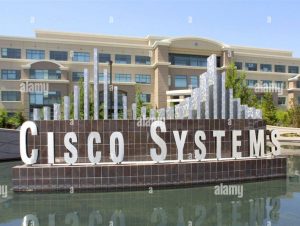VSS – Advanced Enterprise Campus Design
2 min read
Virtual Switching System (VSS) solves the Spanning Tree Protocol unused blocked links problem by converting the distribution switching pair into a logical single switch. With VSS, the physical topology changes because each access switch has a single upstream distribution switch rather than having two upstream distribution switches. The bundled access switch pair is called a Multichassis EtherChannel (MEC), and it creates a loop-free topology eliminating Spanning Tree Protocol. VSS is configured only on Cisco 4500, 6500, and 6800 Series switches.
In Figure 7-8, the two switches are connected to each other via virtual switch links (VSLs), which makes them seem like a single switch. The key benefits of VSS include the following:

Figure 7-8 Virtual Switching System
- Layer 3 switching toward the access layer
- Simplified management of a single configuration of the VSS distribution switch
- Better return on investment (ROI) via increased bandwidth between the access layer and the distribution layer
- No need to configure an FHRP such as HSRP or VRRP
StackWise Virtual
The Cisco Catalyst 9000 platform StackWise Virtual technology allows the clustering of two physical switches together into a single logical entity. The two switches operate as one; they share the same configuration and forwarding state. One of the most significant changes is that StackWise Virtual enables the creation of a loop-free topology because the two switches operate as one. Thus, the spanning-tree domain treats the StackWise Virtual pair as one bridge node instead of two. In addition, StackWise Virtual also incorporates many other Cisco innovations—such as Stateful Switchover (SSO), Non-Stop Forwarding (NSF), and Multichassis EtherChannel (MEC)—that enable nonstop communication with increased bandwidth to substantially enhance application response time.
Server Redundancy
Some environments need fully redundant (mirrored) file and application servers. For example, in a brokerage firm where traders must access data to buy and sell stocks, two or more redundant servers can replicate the data. Also, you can deploy Cisco Unified Communications Manager (CUCM) servers in clusters for redundancy. The servers should be on different networks and should use redundant power supplies. To provide high availability in the server farm module, you have the following options:
- Single attachment: This is not recommended because it lacks link-level redundancy.
- Dual attachment: This solution increases availability by using redundant network interface cards (NICs).
- Fast EtherChannel (FEC) and Gigabit EtherChannel (GEC) port bundles: This solution bundles 2, 4, or 8 Fast Ethernet or Gigabit Ethernet links to increase bandwidth.




